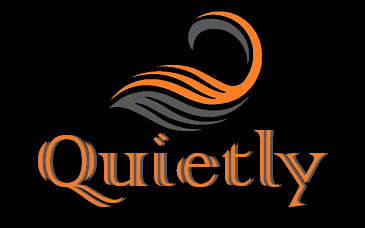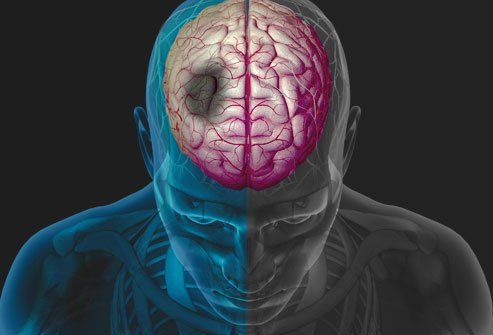sTROKE
is the most common neurological disease that affects the nervous system and is also the leading cause of physical and mental disabilities. It occurs due to an interruption in blood flow to the brain, this interruption can occur as an obstruction of the artery that supplies the brain - ischemic stroke, or by the rupture of a vessel - hemorrhagic stroke.
The most important causes of stroke are: high blood pressure, diabetes, heart disease, fat, alcohol, physical inactivity and smoking.
The consequences depend on: the location, the size of the area of the brain affected, and the time that has elapsed since its onset until patient assistance is provided.
Cerebrovascular accident
Stroke is the most common neurological disease that affects the nervous system and is also the leading cause of physical and mental disabilities. It occurs due to an interruption in blood flow to the brain, this interruption can occur as an obstruction of the artery that supplies the brain - ischemic stroke, or by the rupture of a vessel - hemorrhagic stroke.
The most important causes of stroke are: high blood pressure, diabetes, heart disease, fat, alcohol, physical inactivity and smoking.
The consequences depend on: the location, the size of the area of the brain affected, and the time that has elapsed since its onset until patient assistance is provided.
Neuronal plasticity and lesions
Damage to the brain from a stroke can lead to loss of brain function. However, the brain uses a process called "neuroplasticity" to adapt functionally, by reorganizing cortical maps, which contributes to recovery from stroke. Thanks to these cortical reorganizations, which begin one to two days after the stroke and can be prolonged for months, patients recover, at least in part, the lost capacities.
INDUCED CONSTRAINT THERAPY
Does Induced Stress Therapy work for me?
TCI and TCIm is beneficial for people who have loss of function and have decreased use of an upper limb following a stroke, cerebral anoxia, and other brain type trauma.
Numerous studies have shown the difference between individuals who had suffered a stroke recently, in the past few months, and those who had had a stroke six months or more before, the faster rehabilitation through stimuli is practiced, the more results are quick and impressive.
What is Induced Stress Therapy (ICT)?
After a stroke, recovering from weaker arm use (the side weakened by stroke) and recovering your strength can be a real challenge.
Induced constraint therapy (ICT) involves intensive training of the weakest part of the body (arm, leg), while forcing the use of the strong part, in a sling, a splint, for the most part of the day.
The idea is to encourage, more precisely to induce, the use of the most affected hand for activities of daily living.
What are the different kinds of induced stress therapy?
The term "induced stress therapy" is used to describe a new technique based on old techniques that force patients to use their most affected arm. These old techniques are called "forced use therapies".
The goal is to do intensive training to perform activities of daily living such as preparing food, having leisure activities, but also, like writing. More recently, research has examined the benefits of modified induced stress therapy, based on the same principles as TCI, but with less stress time and less exercise per day. This is the method we use.
Why is it used in people who have had a stroke?
TCI is not only used in the case of stroke.
However, it is most commonly used in stroke. The goal of TCI is to help regain strength and improve functionality on the weaker side of the body; usually the side affected by the stroke.
In addition, the progress being relatively rapid, the patient becomes much more optimistic, which results in better morale and consequently improvements in his general condition.
Does it work for stroke?
TCI allows you to work on brain plasticity. It is due to this great plasticity that a reorganization, a reconstruction of the brain is possible, that by enlarging the regions controlling the part of the body affected.
Studies clearly show that patients who benefit from ICT have weaker control of their arms and a better ability to perform activities of daily living such as cooking or dressing.
Are there any side effects and risks?
There are no side effects. However, some patients tell us that the use of the scarf or mitt is sometimes frustrating and that it slows them down to usual activities.
How long does the treatment last?
With modified TCI, repetitive and condensed training of the affected arm is usually required; 60% of the waking time (6 hours of daily restraint and 30 minutes to 2 hours of upper limb work per day for 2 weeks) improves the motor skills of patients with acute stroke. This training can be done, at home or wherever it is possible to practice safely.
Who offers this treatment?
TCI is usually performed by a physiotherapist or an occupational therapist in a rehabilitation center or in a clinic.
The most important causes of stroke are: high blood pressure, diabetes, heart disease, fat, alcohol, physical inactivity and smoking.
The consequences depend on: the location, the size of the area of the brain affected, and the time that has elapsed since its onset until patient assistance is provided.
Cerebrovascular accident
Stroke is the most common neurological disease that affects the nervous system and is also the leading cause of physical and mental disabilities. It occurs due to an interruption in blood flow to the brain, this interruption can occur as an obstruction of the artery that supplies the brain - ischemic stroke, or by the rupture of a vessel - hemorrhagic stroke.
The most important causes of stroke are: high blood pressure, diabetes, heart disease, fat, alcohol, physical inactivity and smoking.
The consequences depend on: the location, the size of the area of the brain affected, and the time that has elapsed since its onset until patient assistance is provided.
Neuronal plasticity and lesions
Damage to the brain from a stroke can lead to loss of brain function. However, the brain uses a process called "neuroplasticity" to adapt functionally, by reorganizing cortical maps, which contributes to recovery from stroke. Thanks to these cortical reorganizations, which begin one to two days after the stroke and can be prolonged for months, patients recover, at least in part, the lost capacities.
INDUCED CONSTRAINT THERAPY
Does Induced Stress Therapy work for me?
TCI and TCIm is beneficial for people who have loss of function and have decreased use of an upper limb following a stroke, cerebral anoxia, and other brain type trauma.
Numerous studies have shown the difference between individuals who had suffered a stroke recently, in the past few months, and those who had had a stroke six months or more before, the faster rehabilitation through stimuli is practiced, the more results are quick and impressive.
What is Induced Stress Therapy (ICT)?
After a stroke, recovering from weaker arm use (the side weakened by stroke) and recovering your strength can be a real challenge.
Induced constraint therapy (ICT) involves intensive training of the weakest part of the body (arm, leg), while forcing the use of the strong part, in a sling, a splint, for the most part of the day.
The idea is to encourage, more precisely to induce, the use of the most affected hand for activities of daily living.
What are the different kinds of induced stress therapy?
The term "induced stress therapy" is used to describe a new technique based on old techniques that force patients to use their most affected arm. These old techniques are called "forced use therapies".
The goal is to do intensive training to perform activities of daily living such as preparing food, having leisure activities, but also, like writing. More recently, research has examined the benefits of modified induced stress therapy, based on the same principles as TCI, but with less stress time and less exercise per day. This is the method we use.
Why is it used in people who have had a stroke?
TCI is not only used in the case of stroke.
However, it is most commonly used in stroke. The goal of TCI is to help regain strength and improve functionality on the weaker side of the body; usually the side affected by the stroke.
In addition, the progress being relatively rapid, the patient becomes much more optimistic, which results in better morale and consequently improvements in his general condition.
Does it work for stroke?
TCI allows you to work on brain plasticity. It is due to this great plasticity that a reorganization, a reconstruction of the brain is possible, that by enlarging the regions controlling the part of the body affected.
Studies clearly show that patients who benefit from ICT have weaker control of their arms and a better ability to perform activities of daily living such as cooking or dressing.
Are there any side effects and risks?
There are no side effects. However, some patients tell us that the use of the scarf or mitt is sometimes frustrating and that it slows them down to usual activities.
How long does the treatment last?
With modified TCI, repetitive and condensed training of the affected arm is usually required; 60% of the waking time (6 hours of daily restraint and 30 minutes to 2 hours of upper limb work per day for 2 weeks) improves the motor skills of patients with acute stroke. This training can be done, at home or wherever it is possible to practice safely.
This treatment program requires a lot of self-discipline and commitment. People who have had a stroke tell us how difficult it is! It has been shown that people who spend a lot of time with the restraint device (scarf or mitt) achieve significant improvements.
Who offers this treatment?
TCI is usually performed by a physiotherapist or an occupational therapist in a rehabilitation center or in a clinic.
The goal is to allow the person to be able to live at home. In the private and family setting, learning is very different from that exercised in a rehabilitation center. Many exercises can be done alone or with the participation of a caregiver, family members and friends are very useful.






